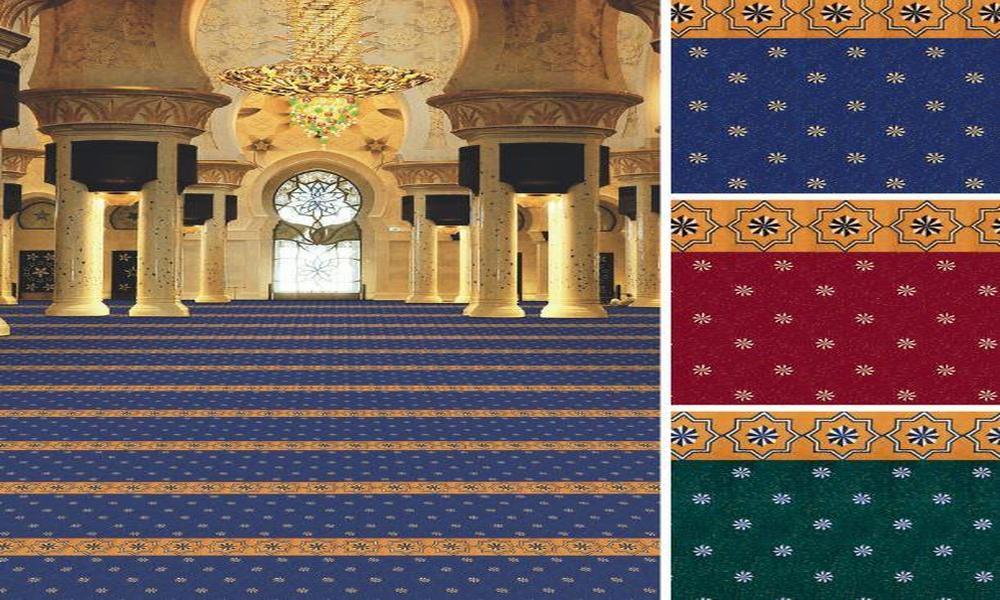Yes, mosque carpets can help with sound insulation and reduce noise levels within a mosque or prayer space. Here’s how mosque carpets can contribute to sound reduction:
Absorption of Sound Waves:
Mosque carpets, especially those with thicker piles or padding, can absorb sound waves and reduce the reflection of sound within the space. When sound waves hit the carpet, the fibers trap and dissipate the energy, reducing the reverberation and echo effect that can occur in large open spaces.
Noise Reduction Coefficient:
Mosque carpets with higher NRC ratings are more effective in reducing noise levels. Consider selecting carpets specifically designed for sound insulation or those with higher NRC values to maximize their noise-reducing capabilities.
Reverberation Control:
Large open spaces, such as mosques, can have high reverberation due to hard surfaces and minimal sound absorption. The installation of mosque carpets with sound-absorbing properties helps to control reverberation by absorbing sound waves and reducing the prolonged decay of sound within the space. This can enhance speech clarity and create a more acoustically comfortable environment.
What are the potential challenges or drawbacks of installing Mosque carpets in Mosques?
While installing mosque carpets in Masjid (mosques) can offer several benefits, there are also potential challenges or drawbacks to consider.
Cost: Mosque carpets can be a significant investment, especially for large prayer spaces. High-quality carpets with sound-absorbing properties may come at a higher cost. It’s important to factor in the budget and consider the long-term value and benefits of the carpet.
Maintenance and Cleaning: Mosque carpets require regular maintenance and cleaning to ensure their longevity and hygienic conditions. Cleaning large carpets can be time-consuming and may require professional services. It’s crucial to establish a maintenance plan and budget for routine cleaning and addressing potential stains, wear, or damage.
Acoustic Considerations: While mosque carpets can contribute to sound insulation and reduction, the acoustics of the entire prayer space should be considered. In some cases, additional acoustic treatments, such as wall panels or ceiling treatments, may be necessary to optimize the sound environment and minimize reverberation.
Cultural and Aesthetic Considerations: Mosque carpets are an integral part of the overall aesthetic and cultural ambiance of the prayer space. Careful consideration should be given to the design, color, and pattern of the carpet to align with the mosque’s architectural style and cultural traditions.
Installation Challenges: Installing mosque carpets in large prayer spaces can present logistical challenges. The removal of existing flooring, preparation of the subfloor, and the installation process itself requires skilled labor and careful coordination. It’s important to work with experienced professionals who understand the specific requirements of mosque carpet installations.
Environmental Concerns: Some mosque carpets may be made from synthetic materials that have potential environmental impacts. Consider exploring environmentally friendly options or carpets made from natural fibers, such as wool or sisal that are more sustainable.
Each mosque has unique needs and considerations, so it’s advisable to consult with architects, interior designers, or experienced carpet suppliers who can provide guidance tailored to the specific requirements and challenges of the mosque space. By carefully considering these factors, mosque carpets can be installed and maintained in a way that enhances the prayer environment while addressing potential challenges.




